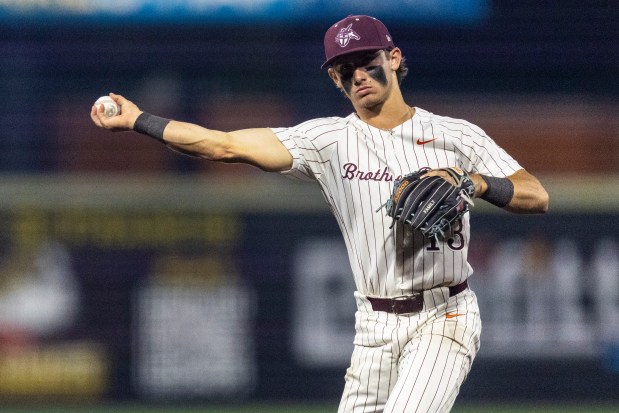In the summer of 2023, strange things happened to the tiny creatures that swim and float in the Chicago River.
One type of water flea, Chydoridae, basically disappeared from the South Side stretch known as Bubbly Creek, while another, Moinidae, experienced a dramatic population surge.
“You could see them with your eyes — clouds of them were so thick,” Shedd Aquarium research biologist Austin Happel said of the Moinidae, each about the size of the tip of a gel pen. “I’ve never seen that before in the wild.”
The “drastic” population shifts happened after the sewer system, overwhelmed by torrential rains, released 3 billion gallons of raw sewage and stormwater into the Chicago River, according to a recent study in the journal Knowledge and Management of Aquatic Ecosystems.
About 2 billion gallons of that contaminated water was released into Bubbly Creek, where the authors of the study tracked tiny aquatic organisms known as zooplankton, including Moinidae and Chydoridae.
“I was surprised at the numbers and the drastic population level that the Moinidae reached — because that’s really high,” said Happel, lead author of the study.
In multiple samples, Moinidae was present at levels more than 50 times higher than normal, and in one case 450 times higher.
“You’re drastically changing up what’s in this part of the river, and in theory that’s going to have all sorts of other effects,” Happel said.
Despite the widespread use of raw sewage releases in U.S. waterways, the environmental effects aren’t well studied or understood, Happel said. His study is one of the first to look at the effects on zooplankton, tiny organisms that are eaten by fish and insects and represent an important part of the food chain.
Among the effects of the Bubbly Creek sewage release: Oxygen levels in the water went to almost zero as bacteria from human waste consumed oxygen and the waste broke down.
Fish, which need oxygen in the water to survive, fled the area, perhaps abandoning their young, Happel said.
In addition, untreated sewage commonly contains potentially hazardous compounds, such as pharmaceuticals, illicit drugs and biocides, a category including pesticides and antiseptics.
The booming zooplankton population could have eaten those toxins, and when fish moved back to the area they would have eaten the zooplankton, potentially accumulating toxins. An angler, in turn, could have eaten the fish, Happel said.
Another possibility is that when fish migrated out of the polluted waters, there were less fish in that area to eat mosquito larvae, leading to more mosquitoes.
Without more study of how different species respond to sewage releases, we won’t know what contaminants people might be exposed to, or what diseases might be spread by additional mosquitoes, Happel said.
“We might be missing something big (or) maybe the ecosystem’s super resilient and we need to look at why is the system resilient,” he said.
He and his colleagues are currently tracking other species in Bubbly Creek, named for the gas bubbles that used to emerge from decaying animal parts in the days when the waterway was used as a dumping ground for the Chicago stockyards.
The researchers are monitoring turtles, herons, fish and insects, in both Bubbly Creek and other areas of the Chicago River. Those other areas could be used for comparison, should another big sewage release affect Bubbly Creek.
Overall, sewage releases in the Chicago River are down, Happel said, because of the $4 billion Deep Tunnel project, an ongoing regional effort to prevent flooding by temporarily holding excess water in massive tunnels and vast reservoirs.
Before 2017, sewage releases were happening each month, Happel said, but now we’ve gone almost two years since the last big release in 2023.
“The city’s making tremendous progress,” he said.
But even the Deep Tunnel is not enough to handle all of the overflow from severe storms that are occurring more often because of climate change.
Chicagoans can help, according to the Shedd, by signing up for Overflow Action Alerts from the Metropolitan Water Reclamation District of Greater Chicago.
During alerts, residents can reduce pressure on the sewer system — and help prevent flooding — by limiting showers, delaying running the dishwasher and avoiding doing laundry.
Such efforts may feel too small to matter, Happel said, but, in this case, strength lies in numbers.
“If we could get a whole block of high-rises to abide by that, that could really reduce the pressure that’s put on the system during those rain days,” he said.
nschoenberg@chicagotribune.com



